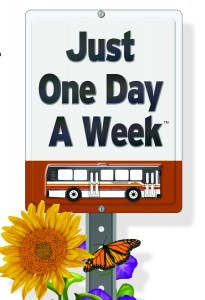Did you ever wonder how County Connection services are made possible? There’s a reason why we can’t just establish a bus line anywhere in our service area; we have to operate within very tight budget constraints, while maximizing service to the best of our abilities. If YOU had the choice, where would you place County Connection bus lines? For a limited time, you actually have the opportunity to be a bus planner for a day and vote for where you would like to see local transit services in Contra Costa. Your suggestions may be included in a long-term Transportation Expenditure Plan (TEP).
Your specific votes for County Connection are especially vital. As a public service, County Connection is funded much like any other governmental service. That is, County Connection is heavily supported by taxes of various kinds. While about 16 to 18 percent of the total annual operating budget at County Connection comes from the fares riders pay, the bulk of the funding comes from federal, state and local funding. Of these, local funding is by far the largest piece. This funding as a whole makes up the operating budget (labor, fuel, insurance, maintenance, marketing, utilities, etc.).
County Connection also has a Capital Improvement Program that is largely funded by federal grants, as well as local match funding. Capital grants can only be used for particular expenses, and are largely used to replace the buses and vans in a timely manner. We are also allowed to use capital funding to maintain the maintenance facility where the buses are stored, fueled, and maintained. Federal grants used for these approved purposes are fairly reliable, as long as we have a federal transportation program. The Senate just passed a new six-year re-authorization that maintains this federal commitment to public transit (as well as the federal commitment to highways). That legislation will be taken up in the House this fall.
Let’s look more closely at the operating budget, and the revenues that support it. Of the taxes that sustain our operations, roughly 3 percent comes from federal sources, about 9 percent comes from state sources, and the rest – about 70-72 percent – is locally sourced. That’s right, approximately 70 percent or more of the County Connection operating revenue must come from local tax sources.
In fact, the trend for suburban transit systems, like County Connection, is to see more of its support come from local sources, as the federal and state governments re-orient their support for public transit towards the larger and more urban systems.
For example, the federal authorization that just expired saw a multi-billion dollar shift away from a funding program that largely benefitted smaller urban and suburban bus systems to a new program that benefits older large heavy rail systems – primarily in places like Chicago, New York, Boston, and Philadelphia.
Meanwhile, the state of California seems to be transitioning their approach to funding public transit to one that is heavily tied to the new Cap and Trade based greenhouse gas reduction programs. Areas like Contra Costa County are not doing well under Cap and Trade-based programs because of our relatively good air quality. In short, lately our share of state transit funding is trending downward.
This means, as we move forward, County Connection and other similar systems are going to become more and more reliant on local funding sources. In recognition of this expectation, the Contra Costa Transportation Authority is currently working on developing its potential plan (TEP) for transportation projects funded by a future Contra Costa County tax measure.
This is where YOU come in. County Connection could greatly benefit by new funding through such a measure to improve transit services where they are needed most. Be a part of Contra Costa Transportation Authority’s public input to help prioritize what projects and programs should be included in the long-term roadmap (TEP) we are developing for future transportation investments.
Vote Today
To make sharing your transit priorities easy, a collection tool is available where you can sign in to access a personal piggybank with 10 virtual coins that you can invest across the projects and programs you care most about. How you divvy them up is your choice – you can use all of your coins in one place, spread them out among 10 different priorities, or anything in between.
You can also participate by attending one of the number of public meetings on the development of the Expenditure Plan that Contra Costa Transportation Authority is planning. You can visit Contra Costa Transportation Authority’s website to learn more.
Finally, if you would like to see the Contra Costa Transportation Authority’s Expenditure Plan include new funding for bus transit, let your locally elected officials know! Tell them how important good bus service is for you and your community.
Remember, the future of bus transit in our area is going to be locally driven and locally funded, so let us know your transit priorities!





